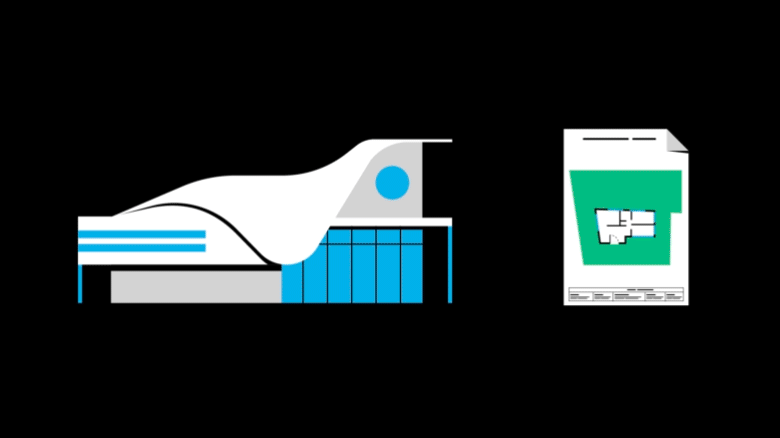Tomorrow, a blockchain could manage the payment of financial aid to a social security beneficiary. It could perform cross-checks with a blockchain that manages digital identities and with another that contains information enabling confirmation of the person’s eligibility for benefits. This would help reduce the risk of fraud and automate a process that was previously lengthy for citizens and costly for administrations.
The promise of blockchain is to create a trusted environment and alleviate the infamous “administrative burdens”.
This is the future imagined by several countries across the world, which have been exploring the potential of blockchain technologies for the public sector for some years. Establishing both sector-based and cross-sector communities of practice and public-private partnerships, more and more countries are implementing a variety of applications around identity, document certification, etc. In Europe, the European Blockchain Services Infrastructure is a concrete example of a public sector-driven blockchain.

Trust, fluidity, and cost reduction
The success of public service digitalization requires meeting a certain number of challenges relating to trust, transparency, or efficiency. For example, for all users to adopt a digital platform their fears concerning the security and confidentiality of their personal data must be dispelled.
Thanks to its unique characteristics (immutability, consensus, irrevocability, and traceability), blockchain can help meet these challenges. The promise is to create a trusted environment and to fluidify certain processes, thus alleviating the infamous “administrative burdens”.
Concretely, blockchain provides a decentralized infrastructure on which transactions (the exchange of digital assets – a file, for example – and changes to their status or state) can be performed between different administrations, between administrations and citizens, or between citizens (when they include a public service element).
In this context, this technology offers two advantages compared to traditional centralized databases, as described by the University of Lille in its white paper on the subject. On the one hand, it guarantees the integrity and traceability of the data in real time for transparent collaborations among users without the need to refer to an external trusted third-party. And on the other hand, it enables self-execution of “smart contracts” to automate and secure processes, resulting in gains in terms of efficiency and quality.
“In the case of public services, this means for example that the blockchain can facilitate the verification of official documents without necessarily contacting the issuing body each time”, explain the authors of the white paper.
There are many potential benefits linked to the use of blockchain. These range from reductions in cost and the time needed to check documents to reducing the risk of fraud, through the possibility for civil servants to view the evolution of a document.

Turnkey blockchain infrastructure
Aware of these benefits, in 2018 Europe launched the European Blockchain Partnership (EBP), a joint initiative of the European Commission, the 27 member states of the European Union (EU), Norway, and Lichtenstein. The objective: to exploit the potential of blockchain technologies to improve and innovate in terms of national and transnational public services in the areas of healthcare, education, fraud prevention, etc.
This initiative led to the creation of the European Blockchain Services Infrastructure, which is to provide States with “a turnkey environment and infrastructure, enabling high-level collaboration and unprecedented governance so as to improve and innovate in terms of national and transnational public services.”
The EBSI is a network of blockchain nodes distributed all across Europe and hosted by EBP-approved operators, offering cross-border public services to public administrations, businesses, and citizens. Made up of different layers (infrastructure, basic services such as timestamping and electronic signature, and use cases), it integrates several “à la carte” technological building blocks that administrations can deploy to carry out their own digital transformation strategy.
These readily available, tried and tested technological building blocks must support a certain number of use cases chosen by the partnership’s member States.

“Easy to verify, impossible to falsify”
In effect, the EBSI is based on a small number of specific applications that will grow in time. These applications are grouped into three major families of use case scenarios, thematic areas within which blockchain technologies can help to answer a certain number of problems.
These are verifiable credentials (aiming to “make information easy to verify, but impossible to falsify”), track and trace, and trusted data exchange. To this date, only the first area has been defined by the EBP.
Within these families are several applications that each have their own specific objectives:
- Self-sovereign identity: to enable users to create and control their own identity beyond borders without relying on centralized authorities, with a bridge to the technology set up by the eIDAS regulation.
- Diplomas: to give back control to citizens when they manage their qualifications and diplomas by considerably reducing verification costs and improving trust in authentication.
- Notarization: to create trusted digital audit trails (an audit trail makes it possible to trace back all the steps of an invoicing process), automate certain conformity checks, and prove data integrity.
- Secure data sharing: to share data among EU authorities completely securely (starting with IOSS VAT numbers).
- Right to asylum requests: to facilitate the management of cross-border and “cross-authorized” procedures.
- European social security number: to facilitate cross-border access to social services.

In a working paper published in 2018, the OECD also identified a certain number of use cases of interest such as registering land titles, managing intellectual property rights, or managing public service delegation contracts, with gains in transparency of public spending.
Focus :
How does the EBSI enable the creation of a trusted environment for administrations and citizens?
The University of Lille explains: “Unlike other blockchain networks such as Bitcoin or Tezos where trust in the correct execution of transactions resides exclusively in the consensus/validation algorithms, [EBSI] integrates a validation algorithm that is much more sovereign in every sense of the word: Proof-of-Authority”. For the authors of the white paper, the notion of proof of authority is fundamental as it gives the state and its different bodies the right to become data validation nodes and write transactions on the register that are unalterable and irrevocable.
Sources :
EBSI website
White paper: Les technologies blockchain au service du secteur public (Blockchain technologies at the service of the public sector)
European Blockchain Services Infrastructure on the European Commission website
Blockchains Unchained: Blockchain Technology and its Use in the Public Sector






